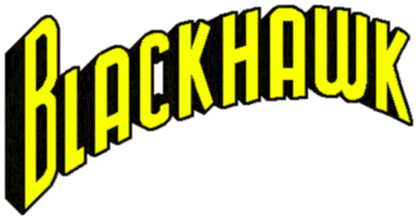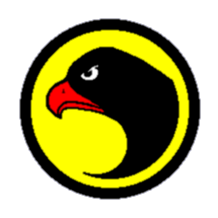

Bill Ward discovered that drawing might be something more than a hobby at Ocean City, Maryland when he was seventeen. He earned enough painting pictures on other kids' jackets to support himself through the summer. And more than earning money, as Ward says, "what a fantastic way to meet girls." What better motivation could a young man want!
Ward enrolled in the Pratt Institute in Brooklyn. Right away, Ward started specializing. He drew girls. Ward took little advantage of attending one of the finest commercial art schools in the country. With the certain advent of war and the knowledge that he'd be going into the service when he turned nineteen, he neglected his studies and concentrated on girls and fraternity life. In his own opinion, he wasn't a good artist when he graduated in 1941.
Ward's first job after school was with a Manhattan art service, but this proved a major disappointment when he learned his work was to clean up for the illustrators. He soon managed to get himself fired from this job and found himself working for Jack Binder, drawing backgrounds for Fawcett's comic books, including Mr. Scarlet, Bullet Man, Ibis and The Shadow. Ward credits Binder with teaching him the real skills he needed to become one of the best comic book artists of the period.
Ward got his big break when he did an entire Captain Marvel book. He decided to try for a job at Quality, the top comic line at that time. His timing was perfect. Reed Crandall had just been drafted and Quality offered him Blackhawk. Ward was somewhat overwhelmed. He had only hoped to do a secondary story in one of their books. Instead he was replacing who was, in Ward's words, "the greatest comic book artist of them all."
According to Ward, his training by Jack Binder had prepared him well for Blackhawk. All of his practice in inking paid off. Quality particularly liked his covers. Ward comments,
"I'm especially proud of Military No. 30, a shot of that silly Blackhawk plane coming at you, cannons firing, Blackhawk piloting, Chop-Chop waving his meat cleaver menacingly over his shoulder.
"I drew that idiotic plane (from the early Military Comics) for years before it was changed to a jet. I used to wonder what nut designed the damn thing. Of course it could never fly -- ridiculous to think so.
"A few years ago I was leafing through a copy of a 1942 "Aerosphere" that I had acquired. Imagine my astonishment . . . there it was, an actual photograph of that same silly plane! Reading on I found it was an experimental model, the Grumman "Sky Rocket," that the army had rejected. Can you blame them? . . . but it must have at least flown!"
Ward was at the top of the comic book world, when as had happened to many others before him, he was drafted. After training, Ward was assigned to communications for an anti-aircraft unit at the Quonset Point Naval Air Base, R.I. His duties left him with plenty of spare time so he began laying out stories for Fawcett during his long night tours. A naval officer noticed his work and suggested he do a strip for the base paper. Ward did, and created Ack-Ack Amy. That strip eventually evolved to become the character for which he is best known, Torchy, the blonde bombshell.
After the war, Ward returned to Quality. He was concerned that he would be lost among all the other fine artists returning from the service, but things worked out well for him. Reed Crandall went back to Military, changed in peacetime to Modern Comics, and Ward was given Blackhawk. Unfortunately, Quality wanted them both to do only the pencils. Their art would be inked by other artists. Both Ward and Crandall were very unhappy about this arrangement. And many comic historians agree that their best work was that they inked themselves.
Ward has a low opinion of inkers. "I've always contended, perhaps unfairly, that an inker was an artist that couldn't handle a strip on his own, that all he had to do was go over the pencil lines with a brush. I was very disappointed with the way my Blackhawks turned out. They weren't nearly as good as the complete jobs I'd done before the war.
"If it affected me, it affected Reed Crandall far more. Never again was he to create the classic Blackhawks that he did in 1941-42. His bold yet simple inking style was lost as the inkers butchered his pencilling. He and I were destined to go on doing Blackhawk this way for seven years.
"Drawing Blackhawk was probably as difficult a job as there was in the comics. There were seven main characters and they had to be shown constantly, really overcrowding the panels. I envied the writers – they could type out 'Show all seven Blackhawks in a mele with the thugs' in probably ten seconds. Imagine how long it took me to draw it.
"One of the most difficult things I found about drawing the Blackhawk characters was their military hats. A hat has to look just right, if it doesn't it looks silly. There's no in-between. Agitated about pencilling and the length of time it took me, I developed a way of solving the hat problem. I had them all knocked off in their first fight, which usually occurred by the second page. Then for the rest of the story they would be bare headed.
"I got away with it for about six months, then, not some astute editor, but some damn smart aleck kid wrote George Brenner (the head editor at Quality), 'Why don't the Blackhawks get a new hatter? They don't seem to fit very well. They all get knocked off at the beginning of each story.'
"They really ripped into me over this. So in the next story the Blackhawks all had to swim underwater out to a submarine. You're right, I drew them swimming underwater with their hats on. 'All right, Ward, let's not overdo it,' George Brenner screamed into the phone."
Around 1946, Busy Arnold, Quality's publisher, asked Ward if he had any ideas for another story for Modern Comics. Ward suggested Torchy, the strip about the daffy blonde that he had created while he was in the Army. It quickly became a big success and even got its own book. Ward's particular talent for drawing women stood him in good stead in this period when romance comics became very popular. Ward was soon so busy doing the covers and lead stories for Quality's romance comics that he didn't have time for his own creation and Torchy was turned over to another talented artist, Gil Fox. But Ward's career in comics was nearly finished anyway. It was the early fifties, and Dr. Wertham's campaign to paint comics as bad for kids was having effects. Soon the diminished sales caused Quality to go out of business.
Ward found other work drawing cartoons for Abe Goodman's Humorama, and in 1954, at Cracked magazine where he continued for many years.
Reference: The Man Behind Torchy, by Bill Ward. The Comic Book Price Guide, No. 8. (Mike Smith provided a copy of the article, the text above was written by DLT.)
The Women of Ward A page dedicated to Bill Wards girl art.
![]() Back to Biographies of Blackhawk creators page
Back to Biographies of Blackhawk creators page
All characters, pictures, and related indicia on these pages are the property of DC Comics. All text is ©1998-2001 Dan Thompson, except where otherwise noted. This homepage is not intended to infringe on the copyright of DC Comics to its characters, but was created out of gratitude to all the wonderful writers, artists, and editors who created the Blackhawks.